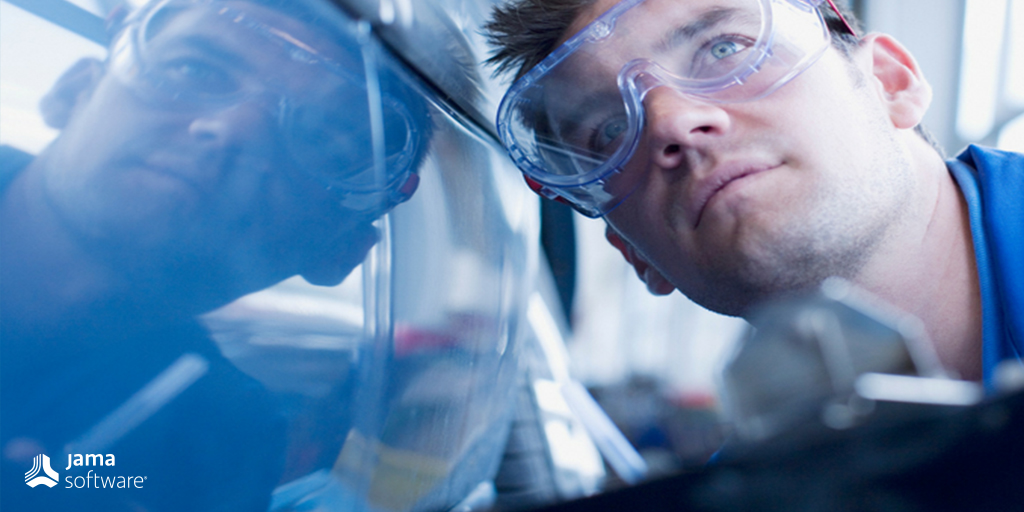
Best Practices for Evaluating Product Development Tools for ISO 26262 Compliance
Vehicles have always been complex machines to build, but connectivity is adding a new dimension to the challenges—especially when it comes to ISO 26262 compliance in modern automotive product development.
Whether it’s a smart dashboard or driving assistance technology, there’s a significant increase in the amount of software and electronics implemented in cars, trucks, vans and beyond. And that’s before even mentioning the future of autonomous vehicles.
These exciting changes are driven by consumer demand, which is leading to intense global competition around developing and releasing cutting-edge features and technology as quickly as possible.
As a result, development teams feel intense pressure from having to adapt to these changing market realities. That includes using new development methods to tackle the significant risks that must be accounted for in the design and validation and verification process with safety standards such as ISO 26262.
Modernizing Safety
In this new, accelerated market, relying on chaotic document software and outdated legacy tools will only leave your team further behind and even potentially increase the likelihood of disaster.
When it comes to ISO 26262 — the international standard for the functional safety of electronics systems in production automobiles — using yesterday’s development processes not only slows you down but leaves your company open to catastrophic risks.
This is why a modern product development platform is so important. If you’re creating a certified ISO 26262 process, you need to trust that it’s been certified as “fit for purpose” in the design and development of safety-critical products. Otherwise, you’re potentially using a buggy platform that could inadvertently lead to a product malfunction disaster, resulting in injuries or fatalities, which plunges your company into deep litigation and potential bankruptcy.
Automotive OEMs and suppliers must be able to trust that the workflows they’re using to identify, build, and test products in a development platform meet critical functional safety requirements.
RELATED POST: The Importance of ISO 26262 in Automotive Development
Evaluation Process
The process you use to gain assurances that a product development platform will allow you to build compliant automotive equipment varies, but at a minimum, you should be looking for some distinct criteria.
For starters, confidence in the platform should be measured. That can be done by sizing up the platform against your current development process, as well as the validation measures and success stories of the tool itself.
Next, you’ll want to look at given scenarios if something goes wrong with the platform. For instance, if there’s some sort of systemic error within the platform, you’ll want to make sure all its customers would be informed immediately so it doesn’t impact a system that’s already under development.
Whichever product development platform you’re considering, you should also ensure its safety manual guides users on how to apply the tool for the development of safety-relevant systems. That includes some instructions on critical use case scenarios and specific safety measures.
Discovering the Right Fit
By evaluating a product development platform in this way, it’ll be more helpful when it comes time to be audited for safety standards such as ISO 26262.
During audits, often times the key focuses are within the areas of project management and quality management. A platform that provides features where you can prove that you have full traceability from requirements through testing will go a long way.
Every company will follow a different path when it comes to proving compliance and validation. One thing you don’t want to do is get caught flat-footed in such a turbulent and competitive time. That’s why upgrading your development process with a solid platform can make all the difference.
For a deeper dive into how teams creating products for any safety-critical industry can lower the costs and risks of complying with functional safety standards, check out the webinar, “Jama ISO 26262 Certification & Best Practices for Development.”
To see more information specific to the automotive industry, we’ve compiled a handy list of valuable resources for you!
- Best Practices for Evaluating Product Development Tools for ISO 26262 Compliance - December 2, 2020
- Could Collaborating with Competitors Boost Autonomous Vehicle Development? - October 1, 2019
- How to Overcome Three of the Biggest Challenges in Medical Device Development - September 10, 2019